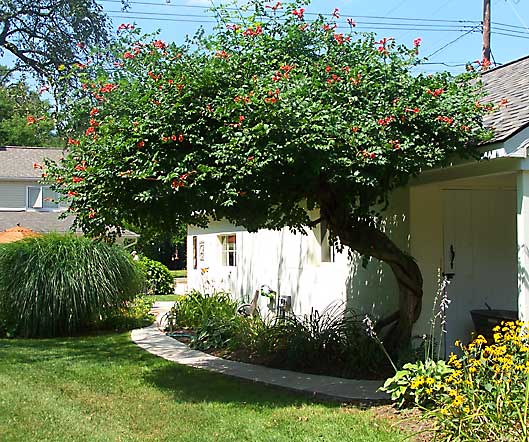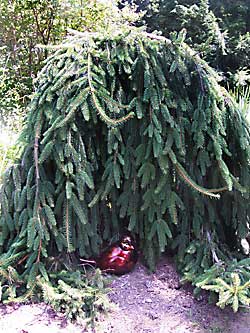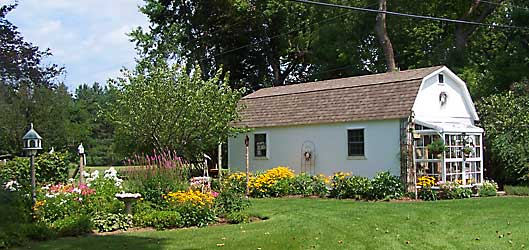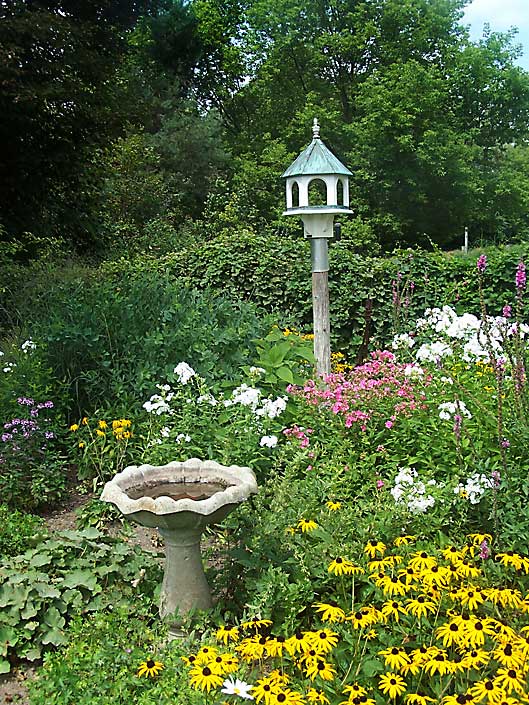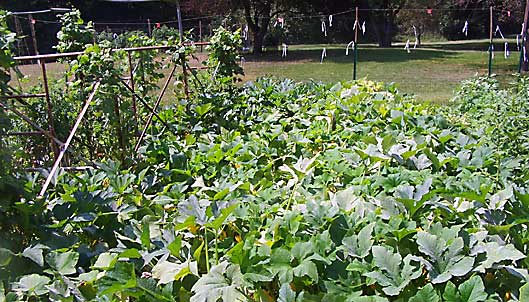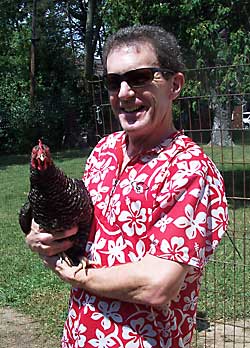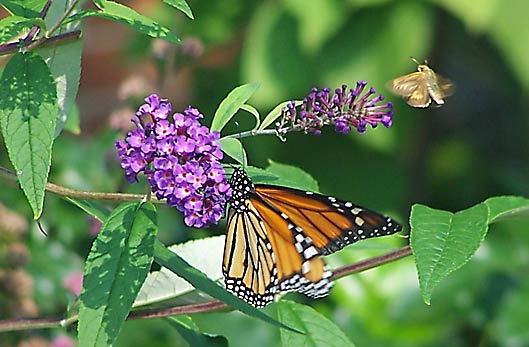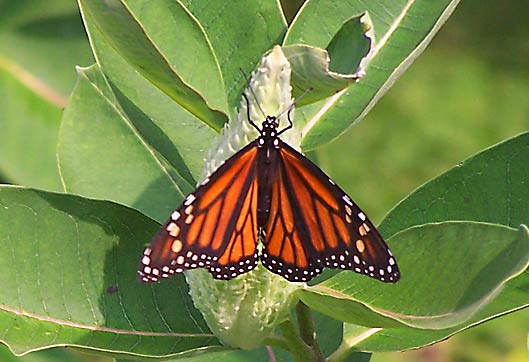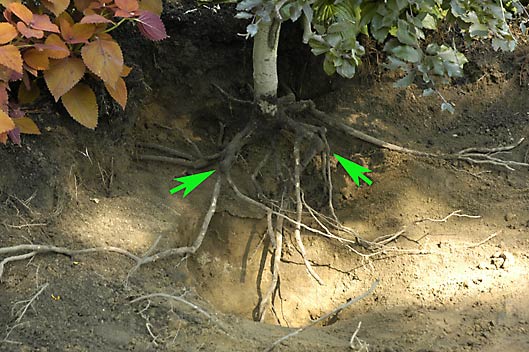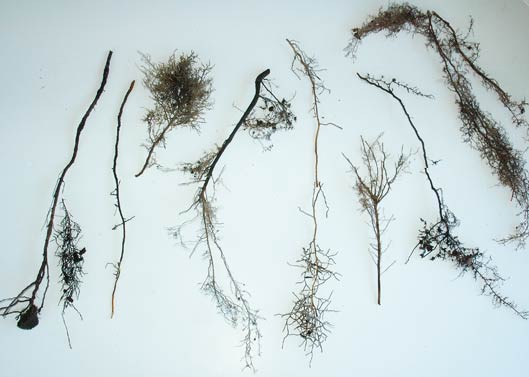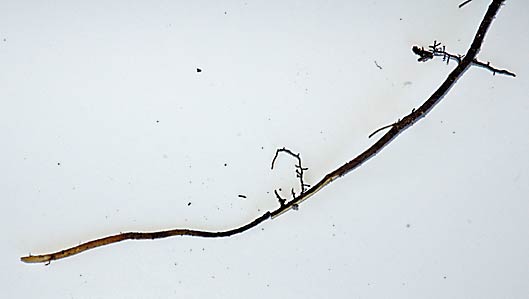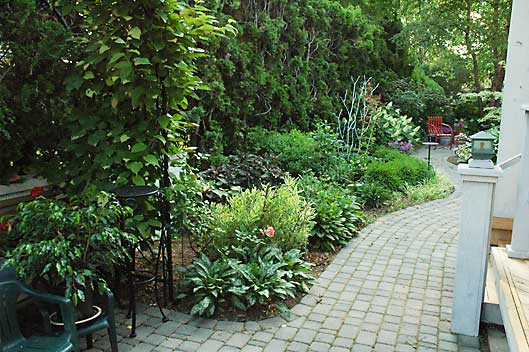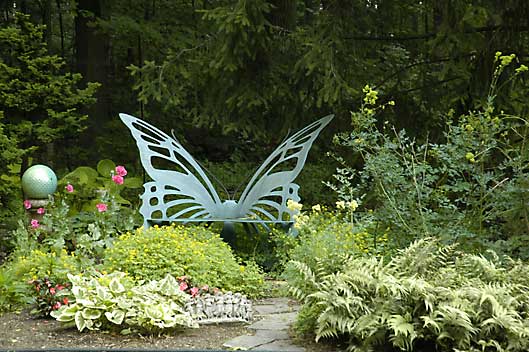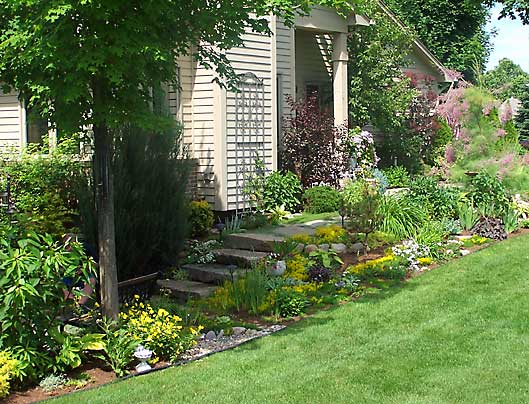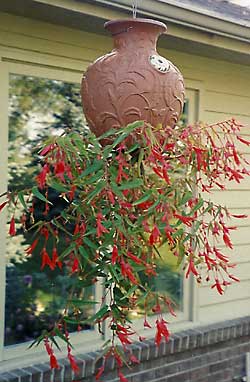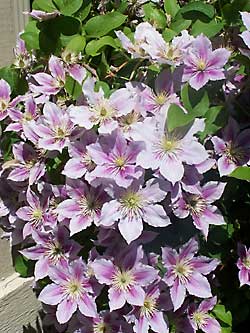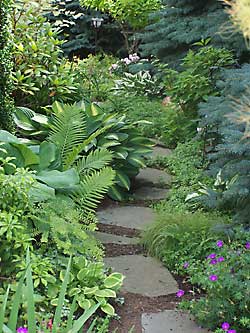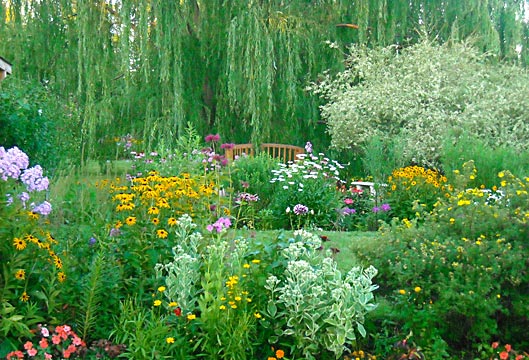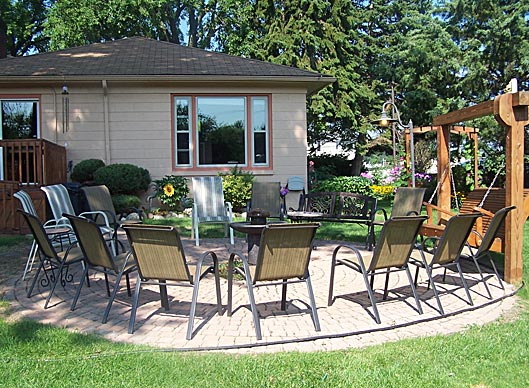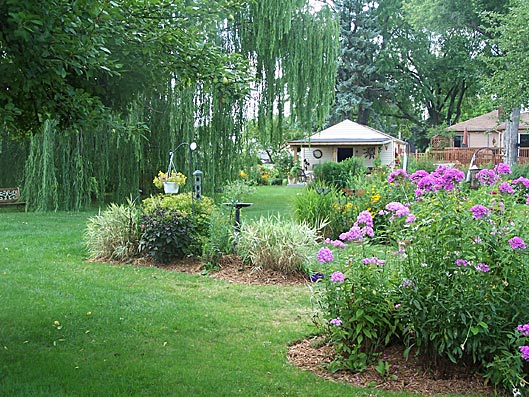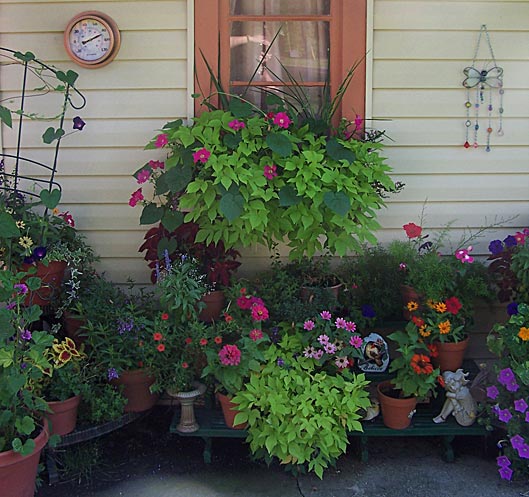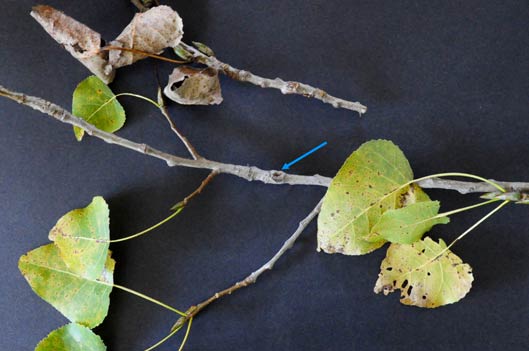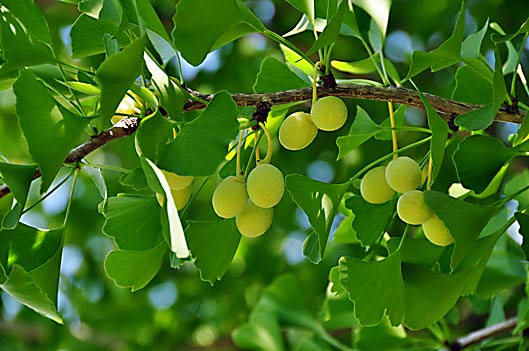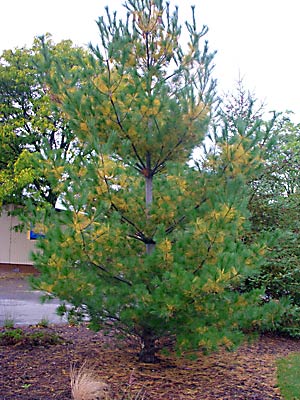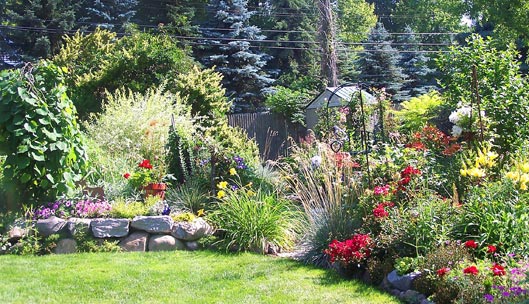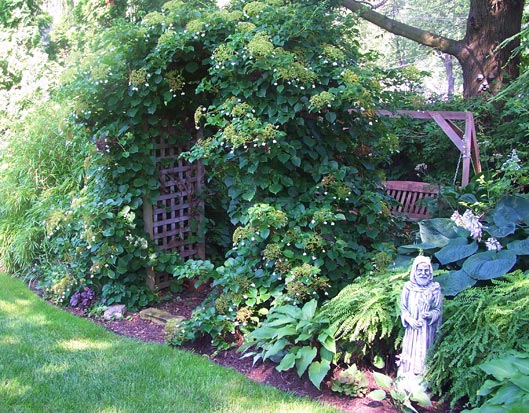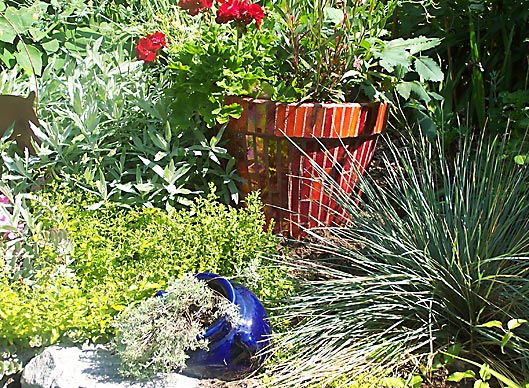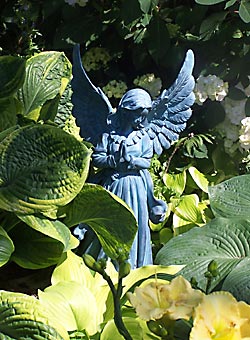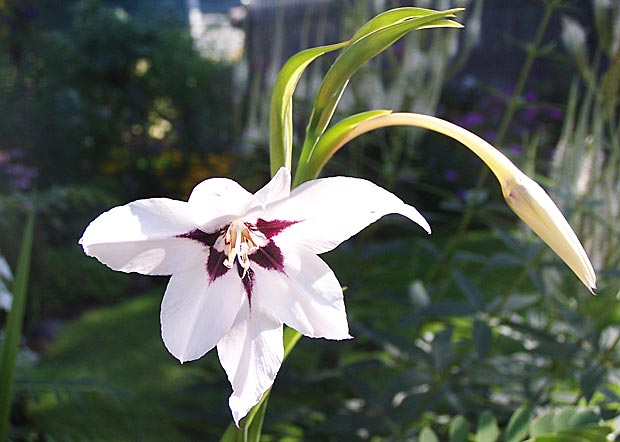
This gorgeous bloom is peacock flower or Abyssinian gladiolus (Gladiolus callianthus ‘Murielae’). A member of the iris family, it blooms in late summer and is a fragrant, tender bulb that must be stored in winter or purchased yearly. (Photo: Sandie Parrott)

Above left: Rub the leaves of this popcorn cassia (Cassia didymobotrya) and it smells like buttered popcorn. This tropical must be treated as an annual and needs lots of water. It has yellow blooms for up to 6 months. Above right: This variegated fig tree bonsai started as a gift included in a planter from a co-worker when McCormack’s father died in 1991. She keeps it as a houseplant, but puts it outside in the summer. (Photo: Sandie Parrott)
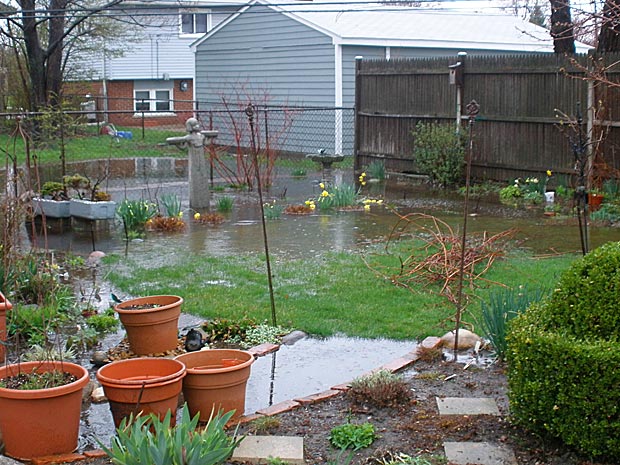
Each year, McCormack’s backyard floods until about May. Yet her garden dries and bounces back the rest of the year. (Photo: Margot McCormack)
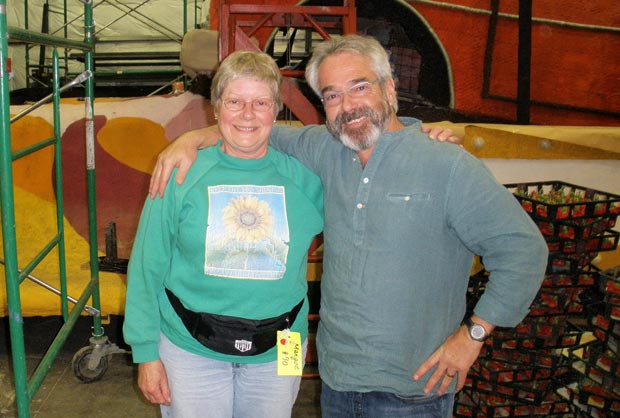
In 2008 McCormack worked on a Tournament of Roses parade float at the Burbank float barn. She volunteered for three days and had her camera at the ready because she heard HGTV would visit. Paul James graciously agreed to have his picture taken while there. (Photo: Margot McCormack)
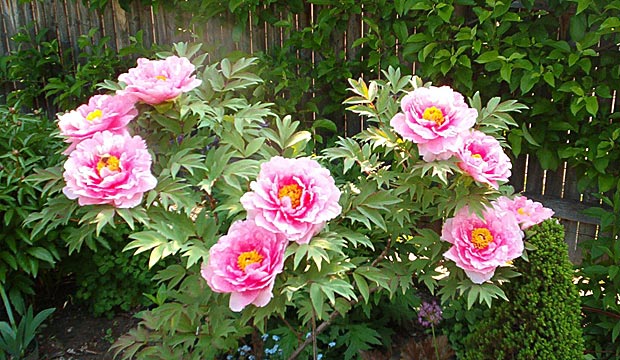
“I bought this Japanese tree peony about 20 yrs ago. It adds one more blossom each year. It never fails that we will get a downpour when it looks its best, so it has a very short appearance. The flower petals are so delicate, like tissue paper. I am guessing it might be ‘Yachiyotsubaki’ tree peony (Paeonia suffruticosa ‘Yachiyotsubaki’).” (Photo: Margot McCormack)

